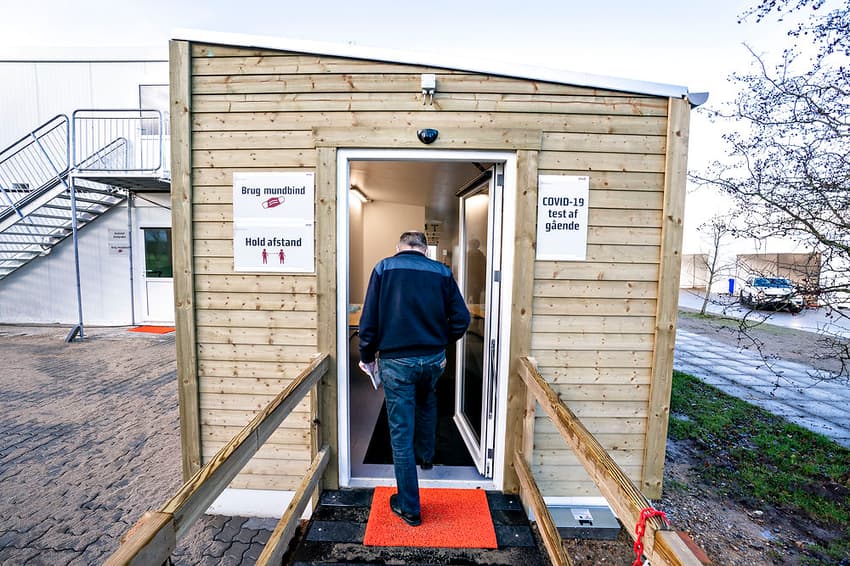Denmark registers nearly 1,500 new Covid-19 cases in one day

A total of 1,468 new cases of Covid-19 were registered by health authorities in Denmark on Tuesday.
The total was confirmed by national infectious disease agency State Serum Institute (SSI) in its daily update. The new confirmed cases come from 71,322 tests. That corresponds to a test positivity rate of 2.06, the highest ever recorded.
Tuesday’s daily figure of 1,468 new coronavirus cases is the second-highest recorded in Denmark up to now. 1,636 were registered on November 28th, although that covered a period of slightly longer than 24 hours. It should be noted that fewer tests were conducted daily during the spring wave of the epidemic.
Nine further deaths with the coronavirus were also registered by SSI on Tuesday. That takes Denmark’s overall number of fatalities due to Covid-19 to 846.
There are currently 254 inpatients with Covid-19 at Danish hospitals, 5 fewer than in the previous update. 38 are in intensive care with 24 on ventilator treatment.
“The proportion of infections amongst tested people is a bit higher than it has been recently. But that could be because we are better at finding the people who really need to be tested, rather than a reflection of an increase of infections in society,” said Nina Weis, professor and consultant at the infectious disease department at Hvidovre Hospital.
“What I think is important for the whole health service to be able to keep going is the number of hospitalisations,” Weis said.
“That number is relatively stable. It is absolutely within the limits of what the health service can cope with. In that regard, I’m not worried,” she added.
Health minister Magnus Heunicke tweeted on Tuesday that Denmark’s reproduction rate or R-number is currently at 1.1.
If the reproduction rate or R-number is above 1.0, the number of infected in a society will grow because each infected person will pass on the virus to an average of more than one other person. If the R-number is slightly below 1.0, the number will decline.
The government is expected to present new measures to contain the spread of the virus on Tuesday afternoon. Those are likely to take the form of restrictions in the Copenhagen area.
READ ALSO: Coronavirus: New restrictions expected in Copenhagen area
Comments
See Also
The total was confirmed by national infectious disease agency State Serum Institute (SSI) in its daily update. The new confirmed cases come from 71,322 tests. That corresponds to a test positivity rate of 2.06, the highest ever recorded.
Tuesday’s daily figure of 1,468 new coronavirus cases is the second-highest recorded in Denmark up to now. 1,636 were registered on November 28th, although that covered a period of slightly longer than 24 hours. It should be noted that fewer tests were conducted daily during the spring wave of the epidemic.
Nine further deaths with the coronavirus were also registered by SSI on Tuesday. That takes Denmark’s overall number of fatalities due to Covid-19 to 846.
There are currently 254 inpatients with Covid-19 at Danish hospitals, 5 fewer than in the previous update. 38 are in intensive care with 24 on ventilator treatment.
“The proportion of infections amongst tested people is a bit higher than it has been recently. But that could be because we are better at finding the people who really need to be tested, rather than a reflection of an increase of infections in society,” said Nina Weis, professor and consultant at the infectious disease department at Hvidovre Hospital.
“What I think is important for the whole health service to be able to keep going is the number of hospitalisations,” Weis said.
“That number is relatively stable. It is absolutely within the limits of what the health service can cope with. In that regard, I’m not worried,” she added.
Health minister Magnus Heunicke tweeted on Tuesday that Denmark’s reproduction rate or R-number is currently at 1.1.
If the reproduction rate or R-number is above 1.0, the number of infected in a society will grow because each infected person will pass on the virus to an average of more than one other person. If the R-number is slightly below 1.0, the number will decline.
The government is expected to present new measures to contain the spread of the virus on Tuesday afternoon. Those are likely to take the form of restrictions in the Copenhagen area.
READ ALSO: Coronavirus: New restrictions expected in Copenhagen area
Join the conversation in our comments section below. Share your own views and experience and if you have a question or suggestion for our journalists then email us at [email protected].
Please keep comments civil, constructive and on topic – and make sure to read our terms of use before getting involved.
Please log in here to leave a comment.